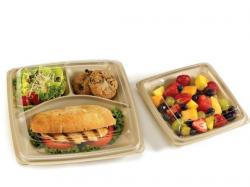Packaging Can Increase Impulse Sales
April 6, 2010 | 2 min to read

First impressions are lasting impressions. Unique shapes, colorful, informative graphics and unexpected materials can help differentiate a product from the competition. In short, how a product is packaged can make or break a sale.
A great package does the first thing it must do and that is to compel the consumer to pick up the product, and the messaging then must speak to the consumer, which ultimately leads to purchasing the product. The spark of a good design, vibrant colors and placement of product can often help drive impulse sales, notes Penny Sweeney, communications manager for Robbie Manufacturing, Lenexa, KS, known for its flexible packaging. Packaging is the most important advertising effort for a brand it should lead the consumer to an emotional reaction or desire.
Dave Byrne, stock line sales manager for Bardes Plastics Inc., Milwaukee, WI, has seen first-hand retail buyers reactions to the companys novelty packaging when he goes on sales calls. The first thing they do is smile when they see packaging, he says. It tears down a lot of objections. About 11 years ago, Bardes started manufacturing deli packaging in colorful novelty shapes such as a daisy, butterfly, pumpkin, Christmas tree and football to name a few.
With their whimsical shapes and colorful designs, Bardes containers are popular with shoppers buying prepared deli items for home entertaining. Packaging is what sells the product, he adds. People are buying a container for whats inside of it. It dresses up an event. One Bardes customer used a football-shaped container to sell 50,000 containers of chicken wings. Because of the container, the retailer made an additional $5 profit on each sale, Byrne notes.
Many containers used in the deli, including novelty shapes, are topped with clear lids or have clear windows through which the contents can be viewed. Consumers tell us they want to see the product theyre buying, so clear packaging has an advantage for driving impulse sales, explains Herb Knutson, director of marketing for Inline Plastics Corp., Shelton, CT.
Still, he admonishes, Great packaging may be able to sell a product, but just once. The product itself must satisfy the consumers perception of value.
When selecting a new tray, Philadelphia, PA-based Genji Sushi, which operates sushi counters in 97 of the Whole Foods Markets in the eastern United States, kept the clear plastic lid so the quality of the sushi would be clearly visible. For the tray, it switched to eco-friendly packaging from Be Green Packaging LLC, Santa Barbara, CA. Over 50 percent of sushi is an impulse buy, says Ken Blakeman, marketing director for Genji Sushi. We needed packaging that would showcase the product in the best way possible. The more we hide the product, the less impulse buys we have. If youre hiding the product from them, they [consumers] assume the worse, that youre hiding the quality of the product.
To read the rest of story, please go to: Deli Business
